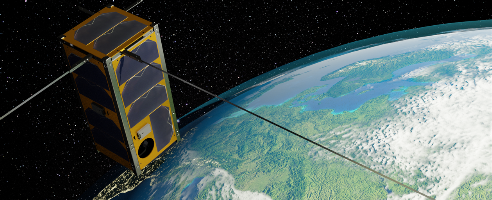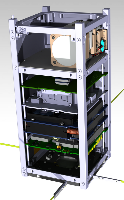| Satellite | Da Vinci CubeSat |
|---|---|
| Spacecraft type | CubeSat |
| Units or mass | 2U |
| Status | not launched, expected in 2026 |
| Launcher | Falcon 9 |
| Organization | Delft University of Technology |
| Institution | University |
| Entity type | Academic / Education |
| Headquarters | Netherlands |
| Oneliner |
Educational mission with amateur radio payload. |
| Description |
The primary goal of this mission is educational, being the spacecraft designed by the MSc and BSc students at the Delft University of Technology. Students are involved on all the mission phases and they will also participate in operations. The second goal of this mission serves an educational purpose, being as the spacecraft is being designed to provide a direct connection to space for primary and secondary school students. By means of a teaching package, all satellite data will be brought directly into the classroom to make space more tangible for the children. In this way, students of all ages will be able to learn about space and everything related to space in an interactive way. It will have two payloads, one for the primary school and one for the secondary school. Furthermore, the satellite will provide an FM transponder open for amateur radio users. The transceiver will switch automatically to this mode when the satellite is not involved in educational activities and there is sufficient available power. The transponder mode uses the uplink receiver section of the radio to receive an FM modulated signal which is then retransmitted with FM modulation using the transmitter section of the transceiver. This satellite belongs to the class of CubeSats, with a size of 100 x 100 x 227 mm and it contains all the required systems to operate in space.
The transceiver onboard the satellite features an FM transponder. This will be switched on automatically when the primary mission of the satellite does not demand up or down link usage. When in this mode, the satellite is able to receive and retransmit FM signals from amateur operators around the globe. The transponder will be configured to operate in the amateur-satellite service allocations of 145.8-146 MHz (uplink) and 435-438 MHz (downlink). The availability of this transponder is dependent on the available power in the satellite. It is expected that the educational tasks of the mission will be carried out during the day and the transponder mode will be automatically activated during the eclipse period during the nominal mission phase of the satellite. Limitations in the usage of the transponder can arise in case the satellite is not in nominal mode (safe mode due to unexpected problems), when downlink time is requested by the ground station to fulfill the educational mission and when the status of charge of the batteries is too low. The transponder is equipped with a squelch, activating the transmitter only if the received signal strength is higher than a pre-programmed threshold. It is expected that primary school students will be involved in receiving the satellite signals to further promote technical higher education with the support of Dutch radio amateurs. |
| Notes |
Selected by ESA for 4th “Fly Your Satellite!" in 2024. |
| Sources | [1] [2] [3] |
| Photo sources | [1] |
| COTS subsystems |
|
| Subsystems sources | [1] [2] |
Last modified: 2024-12-29


